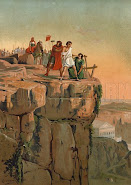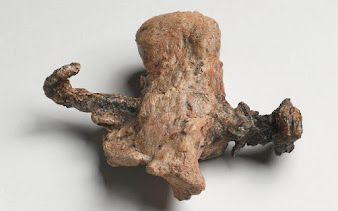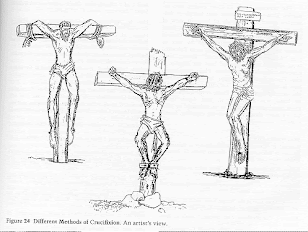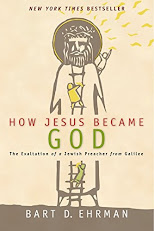Brutal Punishments & Executions in Ancient Rome
Antiquite romaine "Spartacus, chef des revoltes lors de la Troisieme Guerre servile en Italie entre 73 et 71 avant JC, et les autres esclaves crucifie
https://www.alamy.com/antiquite-romaine-spartacus-chef-des-revoltes-lors-de-la-troisieme-guerre-servile-en-italie-entre-73-et-71-avant-jc-et-les-autres-esclaves-crucifie-image353614841.html?irclickid=3IO0Aq1LTxyIWYiytWw3kTvQUkGWxV2hv2HB340&irgwc=1&utm_source=77643&utm_campaign=Shop%20Royalty%20Free%20at%20Alamy&utm_medium=impact
THIS ARTICLE IS NOT FOR SENSITIVE READERS,
CONTAINS EXTREMELY CRUEL VIOLENT DESCRIPTIONS.
PLEASE CONSIDER THIS BEFORE READING...
YOU CAN SAY WHAT YOU WANT ABOUT ANCIENT ROME...
BUT THE ROMANS WHERE PIONEERS OF CRUEL EXECUTIONS
WHEN IT CAME TO GETTING RID OF THREATS TO THE EMPIRE.
Here is a short list & a little historical background on a few of the most brutal methods:
Damnatio ad Bestias (Killing by Wild Animals)

Adobe Stock: FILE #: 22712757
A portrait of leopard attacking a person under Roman Execution method.



Jan Styka - Les chrétiens aux lions - 1902
Contributor: Historic Images / Alamy Stock Photo
Tarpeian Rock (The cliff where Romans threw Traitors from)


 Image Sources:
Image Sources:https://www.alamy.com/the-tarpeian-rock-execution-site-capitoline-hill-ancient-rome-image186372535.html?irclickid=3IO0Aq1LTxyIWYiytWw3kTvQUkGWxQ21v2HB340&irgwc=1&utm_source=77643&utm_campaign=Shop%20Royalty%20Free%20at%20Alamy&utm_medium=impact
https://www.alamy.com/thrown-from-rock-image5081157.html?irclickid=3IO0Aq1LTxyIWYiytWw3kTvQUkGWxQ29v2HB340&irgwc=1&utm_source=77643&utm_campaign=Shop%20Royalty%20Free%20at%20Alamy&utm_medium=impact
One method of execution, reserved for murderers and traitors, was to hurl them off a tall cliff. The cliff of the southern summit of Capitoline Hill, overlooking the Roman Forum in Ancient Rome, was ideal for such barbarous acts. This cliff, called the Tarpeian Rock, is named after a famous traitor who tried to sell Rome to her enemies in return for gold, and instead got killed by the very enemies she tied to betray to. Her name is Tarpeia, and she was the daughter of Spurius Tarpeius, the commander in charge of the Capitoline Hill’s defenses. According to one version of the legend, Tarpeia approached the Sabine king Titus Tatius when he attacked Rome in the 8th century BC, and offered to open the gates of the citadel in exchange for the gold bracelets they wore in their arms. In some versions, it was the Sabine king who, sensing greed in her eyes, bribed her to open the citadel gates. After Tarpeia allowed the Sabine warriors to gain passage into the city, instead of showering her with gold, the Sabines struck her with their shield and crushed her to death. Apparently, even the Sabines loathed her treachery and punished her for betraying her own people. Legend tells us that Tarpeia’s body was buried beneath the cliff that bears her name, and for centuries afterwards, all notorious traitors were thrown from the Tarpeian Rock, a fate that was considered worse than death because it carried the stigma of shame. Execution by hurling off the Tarpeian Rock continued till the 1st century CE, until it was prohibited by law.
Poena Cullei (from Latin 'penalty of the sack')



Crucifixion
Not "invented" by the Romans but "perfected" by the Romans.
In antiquity crucifixion was considered one of the most brutal and shameful modes of death. Probably originating with the Assyrians and Babylonians, it was used systematically by the Persians in the 6th century BC. Alexander the Great brought it from there to the eastern Mediterranean countries in the 4th century BC, and the Phoenicians introduced it to Rome in the 3rd century BC. It was virtually never used in pre-Hellenic Greece. The Romans perfected crucifixion for 500 years until it was abolished by Constantine I in the 4th century AD. Crucifixion in Roman times was applied mostly to slaves, disgraced soldiers, Christians and foreigners--only very rarely to Roman citizens. Death, usually after 6 hours--4 days, was due to multi-factorial pathology: after-effects of compulsory scourging and maiming, hemorrhage and dehydration causing hypoglycemic shock and pain, but the most important factor was progressive asphyxia caused by impairment of respiratory movement. Resultant anoxaemia exaggerated hypoglycemic shock. Death was probably commonly precipitated by cardiac arrest, caused by vasovagal reflexes, initiated inter alia by severe anoxaemia, severe pain, body blows and breaking of the large bones. The attending Roman guards could only leave the site after the victim had died, and were known to precipitate death by means of deliberate fracturing of the tibia and/or fibula, spear stab wounds into the heart, sharp blows to the front of the chest, or a smoking fire built at the foot of the cross to asphyxiate the victim.

Archaeological evidence of crucifixion is rare, as victims were rarely properly buried. Most crucifixions used rope rather than nails to bind the condemned to a cross - Albion Archaeology.



The calcaneus of Yehohanon ben Hagkol, with transfixed nail. A reconstruction of what the foot may have looked like around the time of death. (Image used with kind permission of Joe Zias.)
Sometime between 130 and 360 C.E., a 25- to 35-year-old man in what’s now Cambridgeshire, England, died by crucifixion at the hands of the Roman Empire. His skeleton—found with a telltale nail hammered through its heel bone—represents one of the few surviving physical traces of the ancient punishment, report David Ingham and Corinne Duhig for British Archaeology magazine. “We know a reasonable amount about crucifixion: how it was practiced and where it was practiced and when and so on from historical accounts,” Ingham, project manager at Albion Archaeology, which conducted the excavation, tells Jamie Grierson of the Guardian. “But it’s the first tangible evidence to actually see how it worked.” Archaeological evidence of crucifixion is rare, as victims often didn’t receive a proper burial. Additionally, most crucifixions used rope rather than nails to bind the condemned to a cross. According to BBC News, scholars know of only three other possible physical examples of crucifixion during the ancient era: one found in La Larda in Gavello, Italy; one from Mendes in Egypt; and one from Giv’at ha-Mivtar in north Jerusalem.


Respirations during crucifixion. Left, Inhalation. With elbows extended and shoulders abducted, respiratory muscles of inhalation are passively stretched and thorax is expanded. Right, Exhalation. With elbows flexed and shoulders adducted and with weight of body on nailed feet, exhalation is accomplished as active, rather than passive, process. Breaking legs below knees would place burden of exhalation on shoulder and arm muscles alone and soon would result in exhaustion asphyxia.
What happened to the Bodies of Crucified Prisoners?
Sometimes Christian apologists argue that Jesus had to be taken off the cross before sunset on Friday because the next day was the Sabbath and it was against Jewish law, or at least Jewish sensitivities, to allow a person to remain on the cross during the Sabbath. Unfortunately, the historical record suggests just the opposite. It was not Jews who killed Jesus, and so they had no say about when he would be taken down from the cross. Moreover, the Romans who did crucify him had no concern to obey Jewish law and virtually no interest in Jewish sensitivities. Quite the contrary. When it came to crucified criminals—in this case, someone charged with crimes against the state—there was regularly no mercy and no concern for anyone’s sensitivities. The point of crucifixion was to torture and humiliate a person as fully as possible, and to show any bystanders what happens to someone who is a troublemaker in the eyes of Rome. Part of the humiliation and degradation was the body being left on the cross after death to be subject to scavenging animals. John Dominic Crossan has made the rather infamous suggestion that Jesus’s body was not raised from the dead but was eaten by dogs.8 When I first heard this suggestion, I was no longer a Christian and so was not religiously outraged, but I did think it was excessive and sensationalist. But that was before I did any real research on the matter. My view now is that we do not know, and cannot know, what actually happened to Jesus’s body. But it is absolutely true that as far as we can tell from all the surviving evidence, what normally happened to a criminal’s body is that it was left to decompose and serve as food for scavenging animals.
Crucifixion was meant to be a public disincentive to engage in politically subversive activities, and the disincentive did not end with the pain and death—it continued on in the ravages worked on the corpse afterward. Evidence for this comes from a wide range of sources. An ancient inscription found on the tombstone of a man who was murdered by his slave in the city of Caria tells us that the murderer was “hung . . . alive for the wild beasts and birds of prey." The Roman author Horace says in one of his letters that a slave was claiming to have done nothing wrong, to which his master replied, “You shall not therefore feed the carrion crows on the cross” (Epistle 1.16.46–48) The Roman satirist Juvenal speaks of “the vulture [that] hurries from the dead cattle and dogs and corpses, to bring some of the carrion to her offspring” (Satires 14.77–78).11 The most famous interpreter of dreams from the ancient world, a Greek Sigmund Freud named Artemidorus, writes that it is auspicious for a poor man in particular to have a dream about being crucified, since “a crucified man is raised high and his substance is sufficient to keep many birds” (Dream Book 2.53).12 And there is a bit of gallows humor in the Satyricon of Petronius, a onetime advisor to the emperor Nero, about a crucified victim being left for days on the cross (chaps. 11–12). It is unfortunate that we do not have from the ancient world any literary description of the process of crucifixion, so we are left guessing about the details of how it was carried out. But consistent references to the fate of the crucified show that part of the ordeal involved being left as fodder for the scavengers upon death.
As the conservative Christian commentator Martin Hengel once observed: “Crucifixion was aggravated further by the fact that quite often its victims were never buried. It was a stereotyped picture that the crucified victim served as food for wild beasts and birds of prey. In this way his humiliation was made complete.”
Clips from Risen (2016 film). Music by Death Decline
Greek and Roman Practices of Using Common Graves for Criminals.
And we are told by the Roman historian Tacitus of a man who committed suicide to avoid being executed by the state, since anyone who was legally condemned and executed “forfeited his estate and was debarred from burial” (Annals 6.29h).17
Again, it is possible that Jesus was an exception, but our evidence that this might have been the case must be judged to be rather thin.
People who were crucified were usually left on their crosses as food for scavengers, and part of the punishment for ignominious crimes was being tossed into a common grave, where very soon one decomposed body could not be distinguished from another. In the traditions about Jesus, of course, his body had to be distinguished from all others; otherwise, it could not be demonstrated to have been raised physically from the dead.
Source:
How Jesus Became God: The Exaltation of a Jewish Preacher from Galilee Book by Bart D. Ehrman.
Read more on this topic or Check out these audiobook courses:
https://www.amazon.com/How-Jesus-Became-God-Exaltation/dp/0061778184
https://www.audible.com/pd/The-Historical-Jesus-Audiobook/B00DC8EQOI
https://www.audible.com/pd/How-Jesus-Became-God-Audiobook/B00LG7N3E6






.png)
Comments
Post a Comment